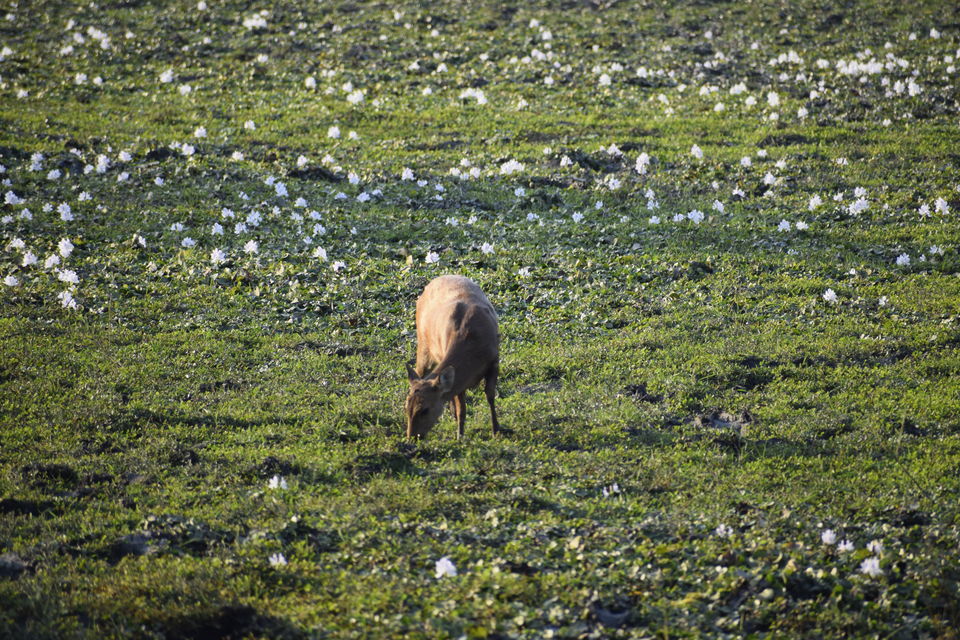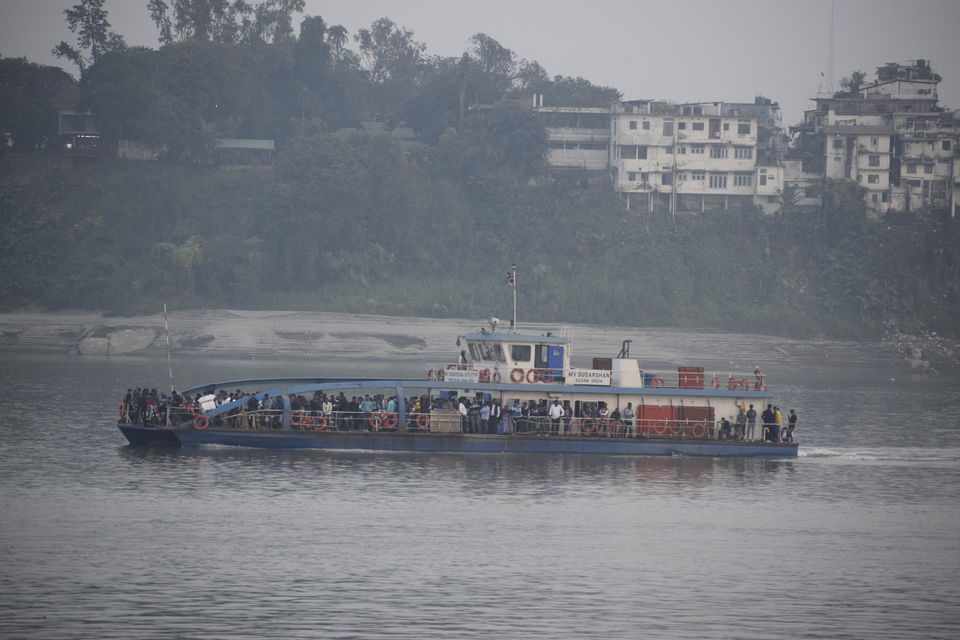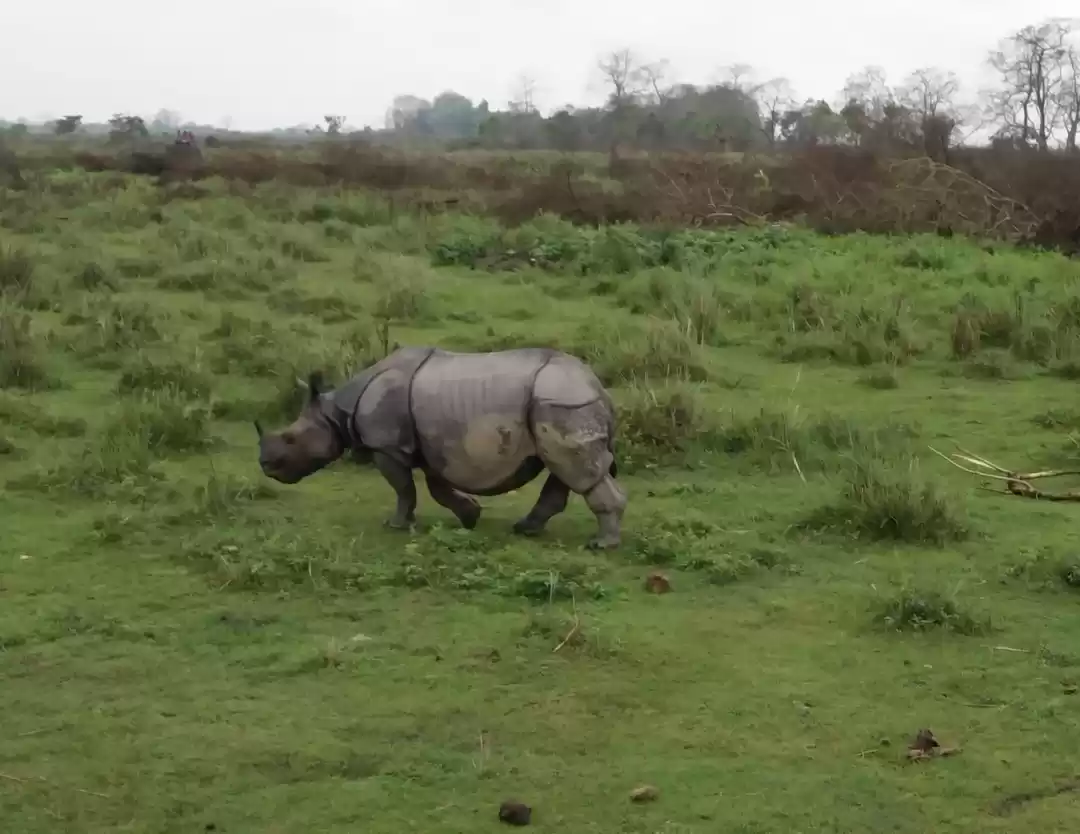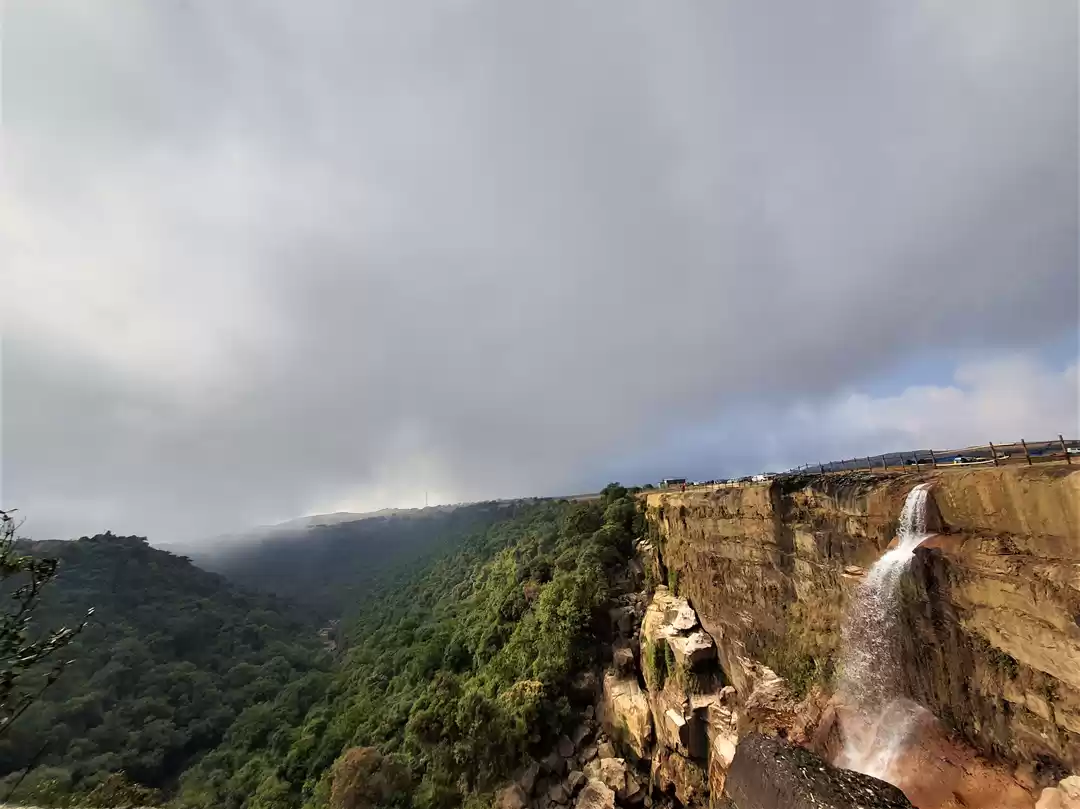The easternmost region of India is known as Northeast India, and it serves as both a geographical and political administrative division of the nation. The area is blessed with a richness of flora and fauna.





I bought a 6:20 a.m. (Indigo Airlines) trip from Mumbai to Guwahati. It takes about three hours to travel. The flight is comfortable, and as you get closer to your destination, you can see snow-capped mountain peaks from the window of the airplane.
Once we arrived at Lokpriya Gopinath Bordoloi International Airport, Guwahati, we were greeted by our tour guide. The airport is located on the outskirts of the main city.
The condition of roads in Assam is fairly good. But once the ghat section starts, then assume that you have entered Meghalaya.
We had booked an A/C Tempo Traveler for the entire trip. The distance from Guwahati Airport to Shillong is around 120kms which would roughly take 3 to 4 hours dur to nature of the roads.
When we reached our hotel, it was already dark (at 4:30pm!!!). We stayed at Hotel Polo Towers which was located on the main road. There is a small shop near the hotel called “Meghalaya Mistan Bhandar” which serves really nice tea and snacks. The rooms in the hotel were quite small but the quality was not compromised. The food quality was also up to the mark. Even the hotel staff was friendly in nature.
After a brief rest, went to have dinner and was done for the done.
In this region of the nation, the sunrise will undoubtedly occur early. We received a wake-up call at 5:30am, and we were scheduled to leave for local sight-seeing at seven. To avoid the city traffic, this was done.
We ate a hearty breakfast before travelling to "Living Root Bridge."
The Living Root bridges seen throughout the East Khasi Hills of Meghalaya embody the self-sufficiency of the Khasi tribes and their relationship with forests. The structure of the bridge is entirely made from tree branches, trunks, and roots.
Due to ongoing expansion projects, the roads leading to these locations are in poor condition. We travelled 2.5 hours from the hotel to the Living Roots Bridge parking area.
The actual location is only a brief 10- to 15-minute walk away. Because it is private property, there are access fees (even for cameras).
Thereafter, we made our way to “Mawlynnong”, the cleanest village in all of Asia. The interior of the village area is off limits to vehicles. Lunch was a local meal served to us. We explored the village after lunch and took some wonderful photos.
One of the most beautiful sightseeing of the day was remaining – Dawki River. It is one of the cleanest rivers in India. It is very close to the border of India and Bangladesh. Near the boating point one can witness the Bangladesh Border very easily.
The cost of boating is Rs.800 for 1 hour and one boat can occupy 3 people max.
At the end of boating session, we witnessed a beautiful sunset along the river and then headed to the final sightseeing for the day. It was the India-Bangladesh border. The road is constantly used by trucks for movement of heavy good because of which it is in very bad condition.
After that headed back to the hotel.
P.S. - There are network issues along the way and also near the border area.















Like the day before, we got an early start to dodge the city traffic. We headed to Elephant Falls today. Distance is around 10kms from the hotel.
The name was given by the English after they discovered a huge rock that resembled an elephant close to the fall during the British rule. Due to an earthquake in 1897, this rock was damaged.
The first fall of Elephant Falls is an example of a horsetail-punchbowl waterfall. The first fall is very broad and is hidden among trees. The second fall, however, is quite domesticated and in the winters (and drier months) looks inconsequential. The third fall is the tallest and comes to view suddenly and looks most spectacular with crystal clear water falling over sharp rocks of myriad shapes.
The sides of the waterfall are flanked by lush greenery and are rich in ferns.
A few ducks playing near the waterfall as well as some birds can be seen as well.
To reach the bottom of the falls, there are 125. The steps are well maintained but are a bit slippery in some parts. Due to presence of thick forest area, the temperature at the waterfalls is much cooler than the outside temperature.
Swimming is strictly prohibited in the waterfall.
At the entrance of waterfalls, visitors can also enjoy the traditional outfits and click some photographs with them. Near the parking lot, there are couple of shops that sell local artifacts.
Our next stop was Cherrapunji – which is considered as the wettest place on earth. Travel time was around 2 hours due to bad conditions of the road. Once we reached, there was nothing much to explore apart from another waterfall view. There are couple of shops available to buy some local goods.
The final stop for the day was “Moswani caves.”
Mawsmai Cave is a nearby attraction that is simple to reach and explore. It is situated not far from Sohra. You may need to crawl or squeeze through spaces inside the cave, which adds to the adventure of cave exploring. You do not want to miss out on this once-in-a-lifetime chance, therefore do not hesitate to take the short and extremely safe tourist path through Mawsmai Cave. The cave is also well-known for having fossils, some of which can be seen if you spend some time inside gazing at the formations and walls.
The entrance to the cave is a short walk through a heavily forested area, which is continuously alive with bird chirps and bug buzzing, is a wonderful way to get to the Mawsmai caverns.
The total length of the cave is 350 meters. There is ample light provisions inside the caves so need to worry about that. Although, due to cramped places at some points in the cave people might feel claustrophobic.
Till we were done exploring the caves and capturing some nice photographs it was already getting dark (at 4:30pm). It started to feel like 9pm at just 5pm out in this area.













The most anticipated destination on the trip, "Kaziranga National Park," was about to be visited. We would need about 5 hours to drive from Shillong to Kaziranga National Park. The roads are a variety of types. Some of the roads have four lanes with moderate traffic, but other parts are only two lanes.
Travel restrictions have been imposed as you enter the Kaziranga Park area to prevent harm coming to any animals that may be crossing the road. Moreover, pay special attention to the left side of the road. The One Horned Rhino is simple to identify. Even additional wildlife can be spotted, including monkeys, migrating birds, swamp deer, wild boars, and wild buffaloes.
The hotel we booked was – Tesco Hotel.
It located at the other side of the national park. To reach here you will have to travel through the national park. The roads are single lane but in a very good condition. There are caution signs along the way to indicate animal crossing areas (even has speed limit areas), so one needs to take care of it. Along the way there are ample restaurants and grocery shops to take care of food and other supplies.
The rooms are spacious enough to accommodate 3-4 people. The bathroom was not of good quality but still usable. There is larger parking area for 4-wheeler. The dining area is also spacious to take care of the crowd. You will experience minor network issues along the journey and also at the hotel although hotel has a good Wi-Fi network so not to worry about it.
We had dinner at the hotel after a very exhausting journey, and then we decided to call it a day.



If you want to explore Kaziranga Park, there are two options – Elephant and Open Jeep Safari.
The early morning hours occur when the Elephant Safari is undertaken. 5 and 6 am are the available times. The reservation can only be done online. A maximum of 6 people can mount an elephant costing Rs. 1200 per person. The elephant safari lasts for around an hour.
The gate for elephant safari is located around 45 minutes from our hotel. It was very early in the morning hence the weather was also very chilly.
We returned to our hotel for breakfast after the safari. Over breakfast, I took a quick nap before prepping for the subsequent sightseeing.
The next destination was “Kaziranga National Orchid and Biodiversity Park.”
The Central Range of Kaziranga, Kohora Chariali, is located 2 kilometers from the Kaziranga National Orchid and Biodiversity Park. The park, which spans an area of around 6 acres in the village of Durgapur, is regarded as the biggest orchid park in India's Northeastern region. The park has greatly increased the fame of Kaziranga. The Orchid Park features more than 500 different kinds of wild orchids, 132 different kinds of tart fruits and leafy vegetables, 46 different kinds of bamboo, 12 different kinds of cane, and several other kinds of plants.
To know more information about the Orchids and the local artifacts kept in the museum you can hire a guide (it is chargeable). Post exploring the area, we headed for a special lunch thali.
The thali consists of 26 local dishes and is more than enough for one person. Non-veg option is also available.
Once we were done with lunch, it was now time for Jeep Safari. The duration of Jeep safari is also 1 hour and the gates close exactly at 5pm. Apart from One-horned Rhino, we were lucky enough to spot wild elephants playing in the pond which was a memorable sight for us.
A traditional Bihu dance was organized for us once we had arrived at the hotel. It increased the evening's appeal.
The Assamese culture and the Bihu festival are both closely tied to the indigenous folk dance known as the Bihu from the Indian state of Assam. The Bihu dance is typically performed in a group by young men and women, and the dancing is distinguished by quick hand and foot movements. The traditional attire of dancers is vibrant and concentrated on the color red, which stands for vigor and excitement.
End of the day for us post dance session.






























It was now time to visit the last remaining city of this trip – “Guwahati” which also happens to be the capital of Assam. The total travel distance is 300kms which takes around 4 to 5 hours depending on traffic. The roads are moderately good.
If you enjoy drinking tea, there is a wonderful shop on the left side of the road where you may purchase a variety of tea leaves before leaving Kaziranga National Park. Behind the tea store, tea plantation is also present which you can visit and click some nice photographs.
On the way to Guwahati, another tourist attraction is “Maha Mrityunjay Temple.”
Maha Mrityunjay Temple is a Hindu Temple dedicated to Hindu God Shiva, situated in Nagaon, Assam, India. This Temple is special in its architectural sense as it was built in the form of a Shivling. It is the World's largest Shivalinga, at a height of 126 feet.
Post visit to the temple, we continued our journey and took around 2 hours to reach the hotel.
The hotel we stayed was – “Ghar 365 Residency.”
The moment one enters the hotel, it is full of vibrant colors. Overall appearance of the hotel is appealing. The room quality is good, but the size is enough only for 2 people. The food court is well maintained. The hotel also a well-equipped gym. There is a supermarket just on the opposite side of road for any supplies. The hotel staff is very friendly and helpful.
We were suggested to visit Ganeshpuri market if someone wants to buy authentic and genuine goods. Its 15-to-20-minute ride from our hotel. Public Transport, Private Taxi as well as Rickshaw are available to reach the market.
Post shopping went back to the hotel, had our dinner, and slept well.





It was now time for exploring the city of Guwahati.
Our first stop was Kamakhya Temple which is around 10kms from our hotel. Due to heavy traffic region, it is advisable to leave for temple as early as possible. After reaching the temple, ample car parking space is available. It is a brief 15-minute walk to reach the main temple from the car parking area. There are a variety of shops available on both sides of the road for some shopping.
For darshan, there are 2 separate queues. One is for darshan from close to the idol which would a lot of time complete.
But there is also another queue which would hardly take 10 to 15 minutes.
Next spot for the day was “Guwahati Ropeway.”
Take the Guwahati Ropeway ride if you prefer to enjoy the magnificent view of the Brahmaputra River. The aerial view of River Brahmaputra, Umananda Island and the panoramic view of Guwahati is worth witnessing from Guwahati Ropeway.
Guwahati Passenger Ropeway is India’s longest river ropeway spanning almost 2 Km. This ropeway connects main Guwahati city to the north bank of river Brahmaputra. The duration of ropeway ride is 10 minutes on one side.
Post ropeway ride we headed for lunch.
After the lunch break it was time for a shopping session. For shopping we were dropped at Pragjyoti which is a government run emporium. You can find all types of local clothes and artifacts under one roof.
The last place to visit for the whole trip was the Brahmaputra River Cruise.
The cruise has 3 types of sitting areas – Lower, Middle and VIP.
I would strongly suggest Middle sitting area for mainly one reason – it has a live orchestra and DJ which one can enjoy. Food and drinks facilities are also available on the cruise. Apart from enjoying the DJ you can also witness a beautiful sunset over the river.
THE END…!!!









































